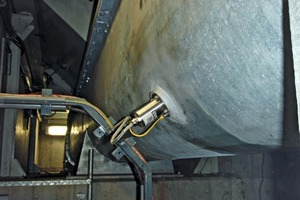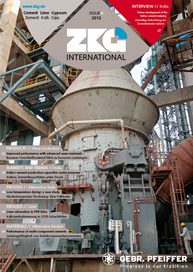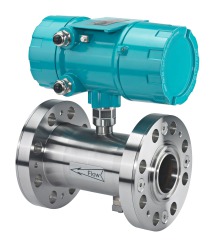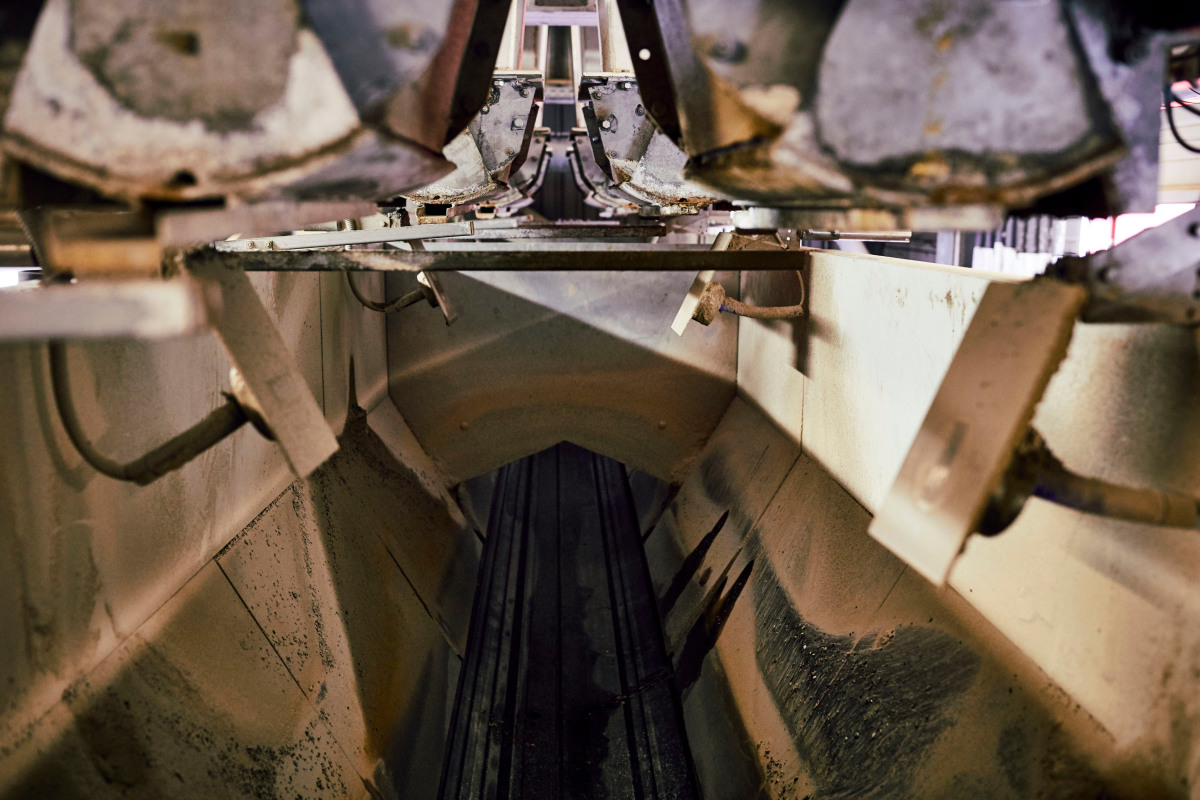Continuous material moisture measurement!
The standard procedure consists of sampling and the subsequent analysis in the laboratory for the determination of the material moisture. A lot of time is needed for this method. Before the production process is correctly influenced, the quality and process safety will have been decreased. Possibly the expenditure of energy and defectives have been increased. Also in this case,microwave technology is one possibility to continuously measure the material moisture (Fig.). The moisture measurement by microwave carried out by SWR engineering is based on the principle of an open resonator. The measurement is carried out in the high-frequency wave range by means of acquiring the surface and capillary moisture. The instantaneous moisture value is assigned to the damping of the microwave coupled to the material being measured. Changes of damping are proportional to the water content. The measuring window of the probe arranged in a flanged casing of special steel is protected by a wear-free ceramic pane. It is also possible to measure through plastics with a thickness of up to 30 mm without any problem.
The most important prere-quisites for a correct measurement of the residual moisture in bulk solids are the correct selection of the position of installation of the sensor and the contact with the material. If chutes or conveyor belts are used for the bulk solids, it must be ensured that the layer thickness of the material passing the probe will is as uniform as possible. It is also possible to use the device in mixers, driers and containers. The installation of the “M-Sens” in screw conveyors has proved a special success since the screw conveyor ensures a more or less constant material density in the measuring field of the sensor. The user receives a signal of 4…20 mA as well as an alarm contact as output. Thus, it is possible to influence directly upstream or downstream pro-cess steps. The continuous further development of the M-Sens 2 makes it possible to install the sensor in processes with permanent temperatures of up to 120°C. With the passed test of the prototype for the explosion-risk areas 20 and 0, the profile of the system has been completed and the possible fields of application have again been extended considerably.
www.swr-engineering.com




